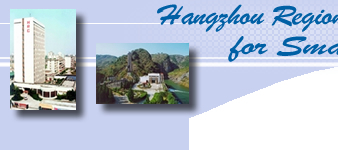---The Follow-up Training Seminar of
2007 Management of Hydropower was held in Uganda in 3-11
April 2008, which was hosted by Vattenfall Power Consultant
AB, Sweden, with Electricity Regulatory Authority of Uganda
being the local host. As invited, HRC delegate, Chief
of Foreign Affairs & Training, Mr. Pan Daqing attended
the event which was attended by 16 participants from 9
countries all over the world.
As Part II of the training programme,
the seminar focused on the evaluation of participants'
"Plan of Action ---- Report & Result". In
accordance with the schedule, HRC representative Mr. Pan
gave half an hour presentation on the study report on
4th April and presented a report titled "Ways to
Improve Implementation of SHP Training", making use
of this opportunity to introduce the international SHP
training that HRC has conducted over the years in terms
of training objectives, methodology, admission requirements,
effects and etc. It was focus on the improvement of implementing
SHP training including the better use of internet, language
proficiency, strengthening information dissemination and
international cooperation. During the presentation, two
faults of the electronic projector occurred. HRC representative
said: "You see, we face another automatic stop of
the electronic projector. For good use of the time, you
may ask questions regarding what I have covered so far.
OK?"
"OK!" All shouted. A participant
from Vietnam asked:"Why is the installed capacity
of SHP as definition in China often increasing? What are
the major reasons?"
"A good question. Personally,
I think the installed capacity of SHP as definition in
China has increased so that those formerly belonging to
the category of medium hydropower stations could also
benefit. That is I suppose the main reason of such increase
of installed capacity in SHP definition. As it is known
to all that one of the factors for the rapid SHP development
in China is the preferential policy that China has promulgated
over the years, such as the exemption or reduction of
business tax for SHP plants, preferential policy on VAT
and loan".
"Great! In fact, I have been asking
the same question. Agree, that is the answer at last!"
The Swedish teacher commented.
In combination with the study report,
the organizer arranged the visits to some hydropower plants
in operation and in construction. Bujagali Hydropower
Station is a project under construction. The technical
and economic indexes in detail were presented to the participants.
HRC representative asked a question: "The installed
capacity of the Plant is 250 MW, but the investment is
750 million USD. The cost per kW is quite high. Why is
it so?" The question resulted in a heated discussion.
The reasons of the high cost are summarized as follows:
First, Uganda is considered one of the least developed
countries in the world. Equipment and material like cement
will have to be imported. Secondly, the country is a landlocked
one and the transportation, often via Kenya and increasing
the cost, is not convenient. Thirdly, there have been
some unstable elements in the country in recently years,
investment risk high.
In addition to the study report at
the very beginning, all the participants were requested
to write a study paper, based on the evaluation of which,
the certificate will be offered. Some participants did
not take it seriously, yet the Swedish teacher turned
out to be quite earnest. In accordance with the requirement
by the teacher, monitor Mr. Pan coordinated with those
whose papers needed improving. Finally, all the participants
obtained the certificates.
Meanwhile, HRC representative made
full use of the chance to meet and hold talks with the
officials and technicians from ERA and the Swedish ambassador
in Uganda, publicizing SHP development in China and HRC's
SHP training programs, making numerous friends and promoting
friendship, as the Kenyan participant joked: "You
are an outstanding Chinese ambassador!"
Finally, Mr. Pan'd like to extend his
gratitude and appreciation to SIDA for sponsoring this
training program, and pay tribute to the organizer, Vattenfall,
represented by Ms Lesley Eriksson, Dr. Bernt, Christer,
Peter, Sara, Torbjorn and other lecturers and working
staff. (2008-04-21)
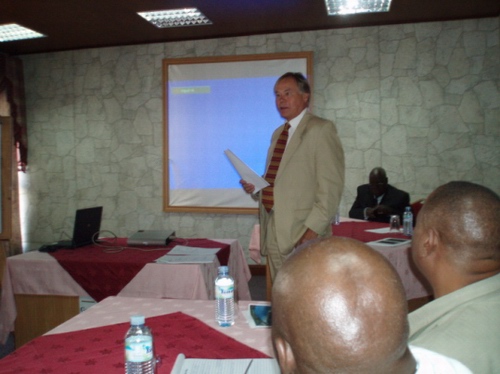
Swedish ambassador met and exchanged ideas with participants

Group photo
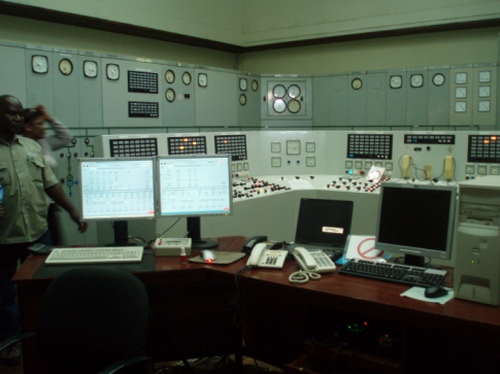
Owen Falls Hydropower Plant (10กม18MW)
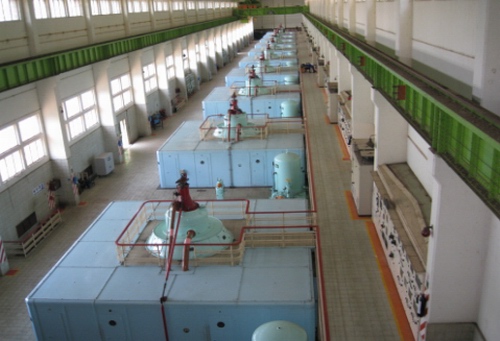
At central controling room of Owen Falls Hydropower Plant
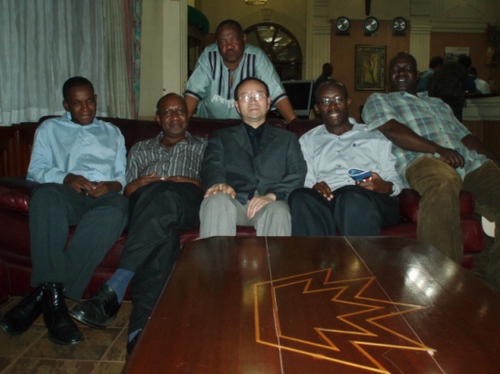
Mr. Pan with some of HRC's former participants
